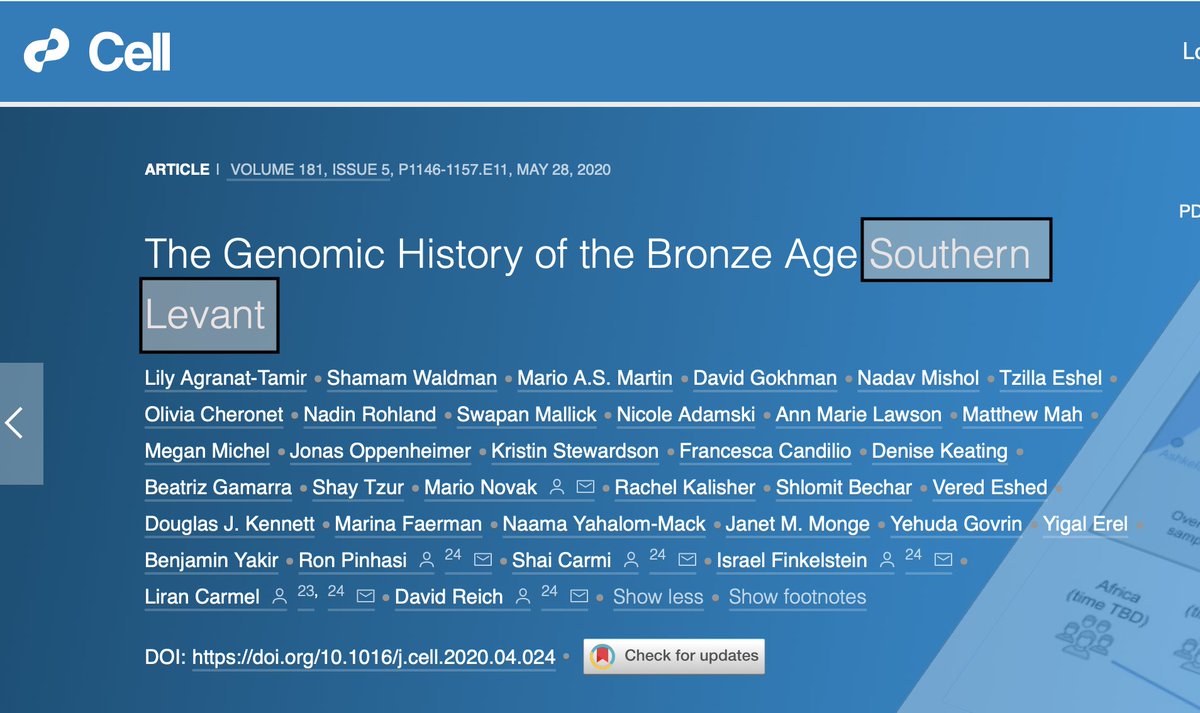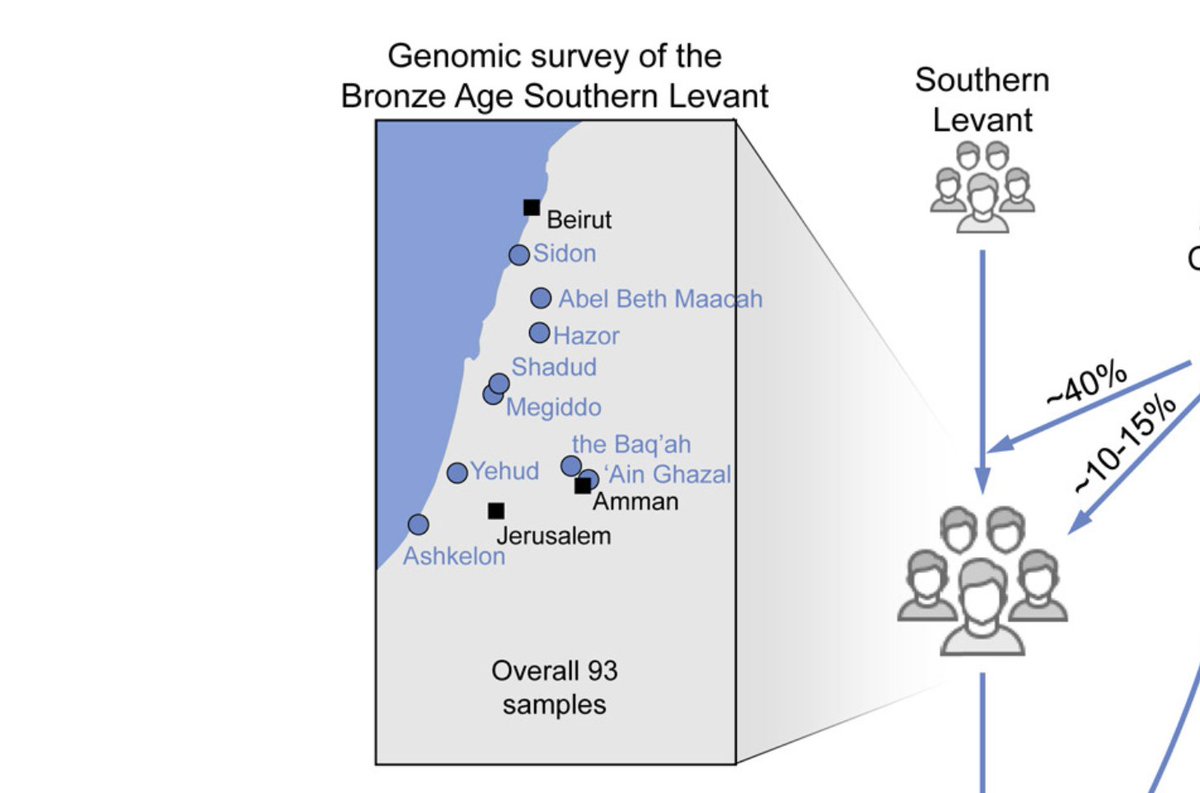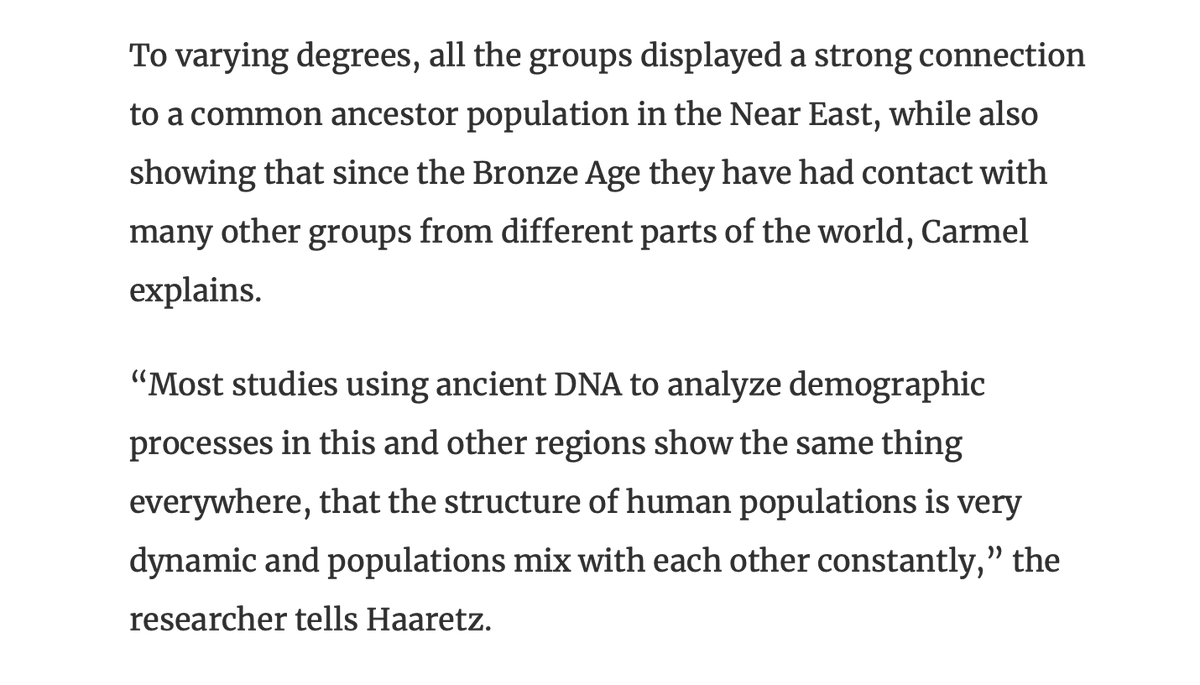Times of Israel reports (as do Haaretz & NatGeo) on a new genetic study of dozens of individuals from the Bronze Age Levant.
Some initial observations . . . https://www.timesofisrael.com/study-shows-canaanites-israelites-biblical-frenemies-kept-genetic-integrity/">https://www.timesofisrael.com/study-sho...
Some initial observations . . . https://www.timesofisrael.com/study-shows-canaanites-israelites-biblical-frenemies-kept-genetic-integrity/">https://www.timesofisrael.com/study-sho...
The study, published today in the journal Cell, is by a team of scholars including groups from Hebrew University and Tel Aviv University and David Reich& #39;s lab at Harvard https://www.cell.com/cell/fulltext/S0092-8674(20)30487-6">https://www.cell.com/cell/full...
The study includes DNA from 93 individuals: 73 newly extracted by the authors of the study (71 Bronze Age, 2 Iron Age) and 20 previously published (13 Bronze Age, 7 Iron Age).
A couple of notes about this:
1. the TOI article incorrectly says that all 93 are from Bronze Age individuals.
This points to lack of precision in the news articles on the study; it& #39;s best to rely on the statements made in the academic journal article.
1. the TOI article incorrectly says that all 93 are from Bronze Age individuals.
This points to lack of precision in the news articles on the study; it& #39;s best to rely on the statements made in the academic journal article.
2. This is a much larger dataset than we& #39;ve seen in similar studies, including the notorious Philistine DNA story from last summer, which only included 10 individuals total. https://twitter.com/MichaelDPress/status/1146805758689980417">https://twitter.com/MichaelDP...
What are the main conclusions of the study:
1. There is significant continuity btw Bronze Age Levantine populations and earlier Neolithic populations -- but also DNA from Caucasus or Zagros.
2. There is also significant continuity w/modern Levantine (& Ashkenazic Jewish) ones.
1. There is significant continuity btw Bronze Age Levantine populations and earlier Neolithic populations -- but also DNA from Caucasus or Zagros.
2. There is also significant continuity w/modern Levantine (& Ashkenazic Jewish) ones.
How new are these conclusions?
The idea of continuity between Bronze Age and modern populations in the Levant is not new, as was concluded for instance by this 2017 study of Lebanese DNA.
(And it& #39;s suggested by all sort of archaeological & related data) https://twitter.com/MichaelDPress/status/890746068908077056">https://twitter.com/MichaelDP...
The idea of continuity between Bronze Age and modern populations in the Levant is not new, as was concluded for instance by this 2017 study of Lebanese DNA.
(And it& #39;s suggested by all sort of archaeological & related data) https://twitter.com/MichaelDPress/status/890746068908077056">https://twitter.com/MichaelDP...
Several previous DNA studies over the last couple of decades have also suggested that Jews and Palestinians have close ancestry, for instance: https://www.haaretz.com/science-and-health/palestinians-and-jews-share-genetic-roots-1.5411201">https://www.haaretz.com/science-a...
AFAIK the idea of some Levantine ancestry from the Caucasus or Zagros hasn& #39;t appeared in previous DNA studies, but has been suggested before on archaeological and linguistic grounds, as the study notes.
The other thing that might be new here is the suggestion that Canaanites are a genetically homogeneous group -- that is, it& #39;s not just a cultural or geographic (or ethnic?) term. And this is picked up on by the news stories.
This is an important point and needs a little background.
For most of the 20th century in archaeology, especially Near Eastern archaeology, a cultural-historical model dominated, one that equated political and cultural and ethnic and linguistic groups.
For most of the 20th century in archaeology, especially Near Eastern archaeology, a cultural-historical model dominated, one that equated political and cultural and ethnic and linguistic groups.
In the case of Canaanites, "Canaan" was seen as a discrete geographic region in the Bronze Age that was also a political area (a province of Egypt), inhabited by a single group ("Canaanites") who spoke a single language, Canaanite.
In the 2nd half of the 20th century this cultural-historical approach was widely rejected in archaeology.
This happened later, and only partly, in "biblical archaeology". With the Phoenicians, this change is reflected in Niels Peter Lemche& #39;s The Canaanites and Their Land (1991)
This happened later, and only partly, in "biblical archaeology". With the Phoenicians, this change is reflected in Niels Peter Lemche& #39;s The Canaanites and Their Land (1991)
In recent years, ancient DNA (aDNA) studies have entered the conversation.
These have tended to support traditional culture-historical understandings of discrete, homogeneous groups.
These have tended to support traditional culture-historical understandings of discrete, homogeneous groups.
This isn& #39;t surprising, since these projects are often spearheaded by geneticists, whose understanding of archaeology reflects old understandings still current in popular literature.
And in the Near East, many archaeologists -- like those involved in these studies -- *still* hold these ideas.
This idea of homogeneous geographic/political/ethnic Canaanites appears in the article, though in somewhat cautious form -- we& #39;re told there& #39;s a correlation, but it& #39;s not discussed exactly how this correlation works.
In the Times of Israel article, Reich is less cautious -- there isn& #39;t just correlation between these different kinds of groups, but Canaanite stands for all of them. Apparently they& #39;re the same?
Aside: this isn& #39;t the only population discussed problematically by the study authors in the TOI piece.
Here& #39;s another study author suggesting that the Spanish simply "mov[ed] to the Americas a few hundreds of years ago...merging with the local populations".
(Is this ironic?)
Here& #39;s another study author suggesting that the Spanish simply "mov[ed] to the Americas a few hundreds of years ago...merging with the local populations".
(Is this ironic?)
Back to the issue of homogeneous Canaanites:
Note that the title of the article isn& #39;t about Canaanites but "southern Levant"
Note that the title of the article isn& #39;t about Canaanites but "southern Levant"
If we look at distribution of sites (in blue), there& #39;s only 1 site north of Israel (Sidon, w/5 individuals).
"Canaan" is widely understood to have included Lebanon and S Syria, but they& #39;re almost completely missing!
"Canaan" is widely understood to have included Lebanon and S Syria, but they& #39;re almost completely missing!
And the site farthest north, Sidon, is reported as being something of an outlier -- so is the Baq& #39;ah, where almost all of the individuals east of the Jordan came from.
I can& #39;t evaluate the genetics, but even granting the conclusions, the study suggests that the Bronze Age population *in what is now Israel from Ashkelon & Jerusalem north* -- that is, half or less of Canaan -- was homogeneous.
When you move beyond this, you see less homogeneity!
When you move beyond this, you see less homogeneity!
And yet the news coverage (here the Times of Israel) suggests that we& #39;re talking about the entire "widely dispersed Canaanite people". Amazing.
Then you have one of the authors of the study (Liran Carmel of Hebrew University) quoted in Haaretz saying that aDNA studies generally show "dynamic" populations that "mix with each other constantly" -- which completely upends how this is being presented!
Haaretz gives us an appropriate image to sum up:
a study that supposedly shows homogeneous genetic (and cultural and ethnic) Canaanites is illustrated by . . . Egyptian clay sarcophagi found in the southern Levant. https://www.haaretz.com/archaeology/.premium-jews-and-arabs-share-genetic-link-to-ancient-canaanites-1.8871073">https://www.haaretz.com/archaeolo...
a study that supposedly shows homogeneous genetic (and cultural and ethnic) Canaanites is illustrated by . . . Egyptian clay sarcophagi found in the southern Levant. https://www.haaretz.com/archaeology/.premium-jews-and-arabs-share-genetic-link-to-ancient-canaanites-1.8871073">https://www.haaretz.com/archaeolo...

 Read on Twitter
Read on Twitter
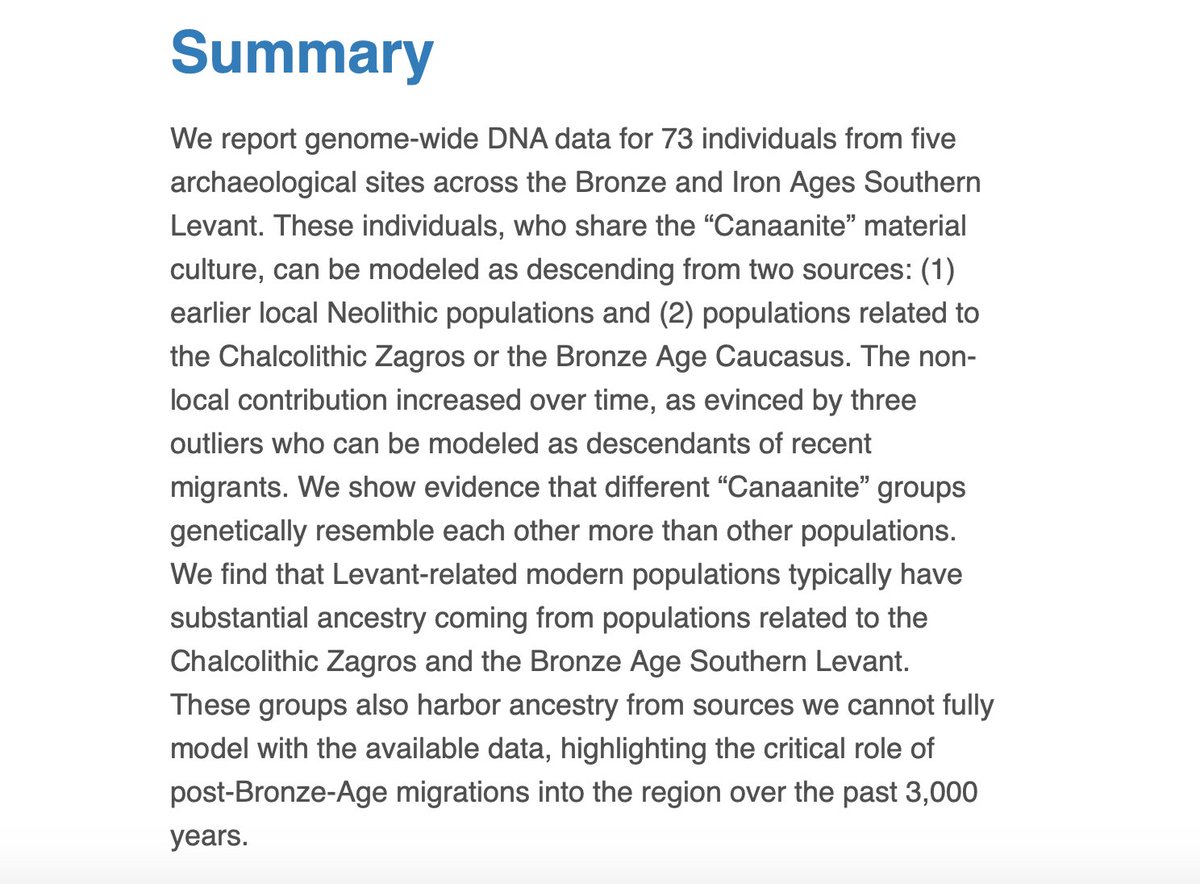
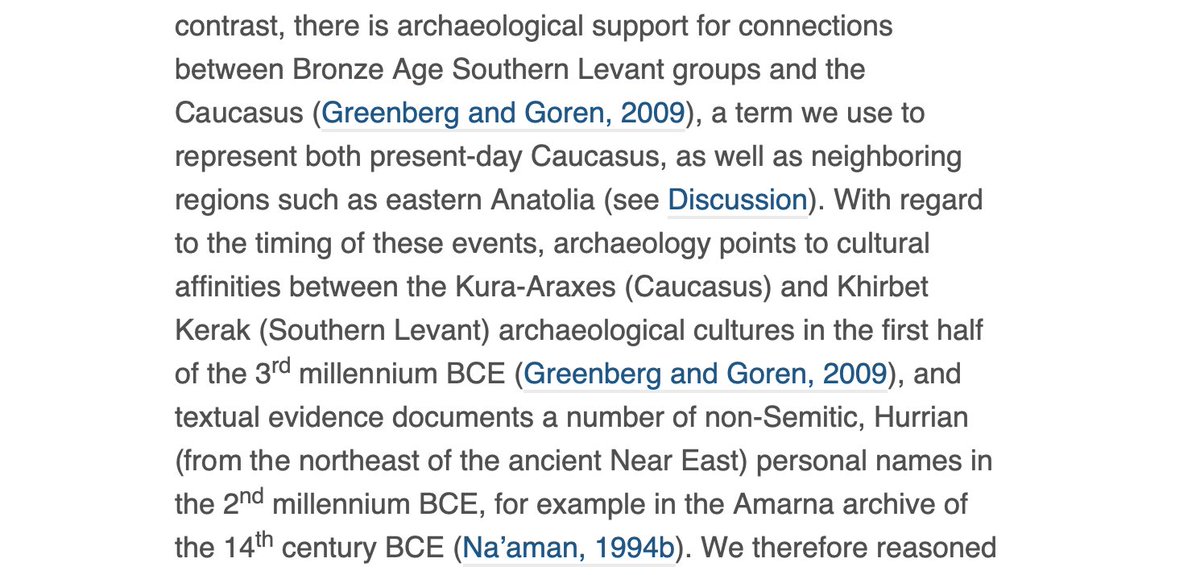
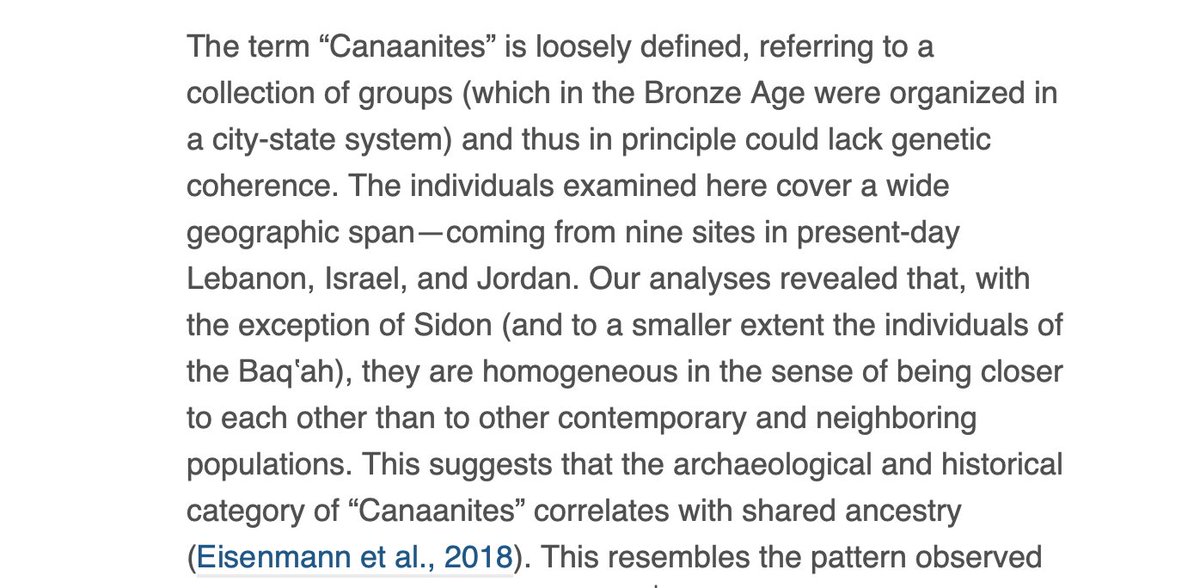
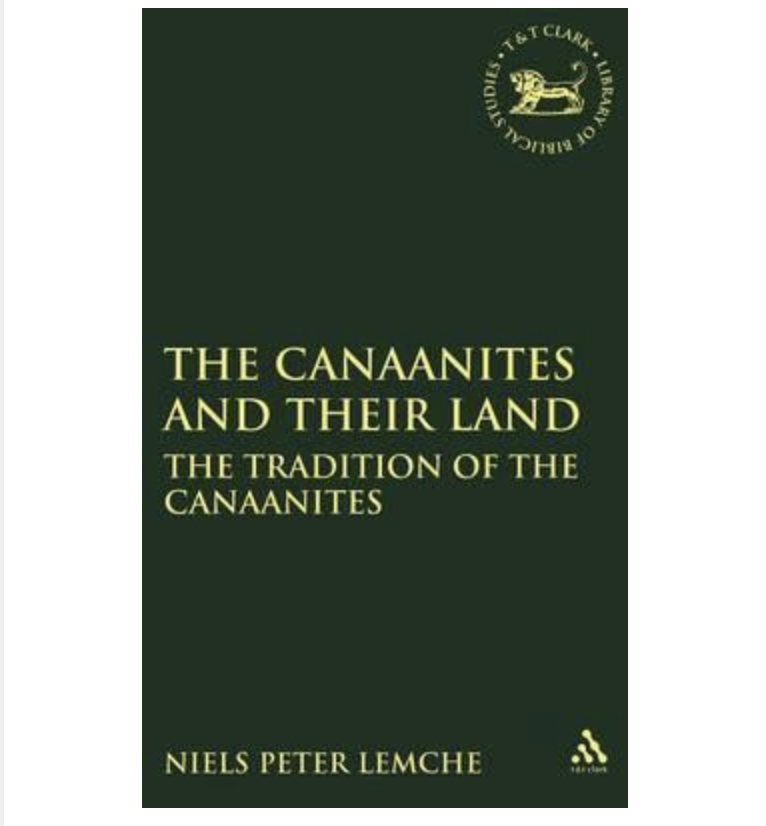


![Aside: this isn& #39;t the only population discussed problematically by the study authors in the TOI piece.Here& #39;s another study author suggesting that the Spanish simply "mov[ed] to the Americas a few hundreds of years ago...merging with the local populations".(Is this ironic?) Aside: this isn& #39;t the only population discussed problematically by the study authors in the TOI piece.Here& #39;s another study author suggesting that the Spanish simply "mov[ed] to the Americas a few hundreds of years ago...merging with the local populations".(Is this ironic?)](https://pbs.twimg.com/media/EZJPUhGWoAU0Nu1.png)
